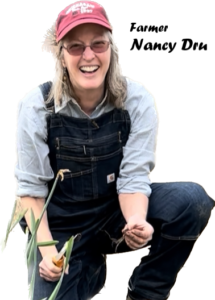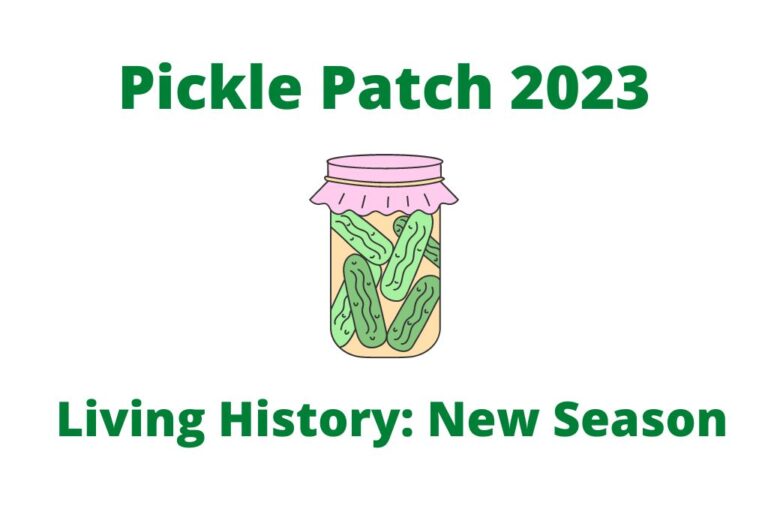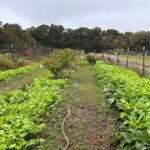If you have read my other articles about the Pickle Patch, you might wonder how this season is doing. And I would say, we are doing better than last year. One thing we learned was that timing is everything.
I still struggle with timing. Have you ever gotten caught up in a different planting zone? Where you always think to plant as if it’s a certain location? I seem to be stuck in the north zone like Chicago and Michigan. In the north, the practice was to plant by Mother’s Day, while here in the mid-south, we can start about March for cool weather crops and early April with the summer crops.
So, is there anything new in the Pickle Patch this year? There’s a bushel and a peck full of fresh changes!
Let’s start with a new look.
New Look
Over the winter, we started preparing our new look. January and February, I spent most of my time building what I call a water dam with the old okra stalks and other garden debris, and then mulched that. I built this water dam as our plot seems to slope downward and last year some things got washed away. The dam helps divert the water towards the ditch that is in front of our plot. Then I laid brown cardboard boxes all around the perimeter of our garden and covered the boxes with free seasoned mulch that is provided by our county.
I use brown cardboard boxes with very minimal ink and all the tape removed, as they are a great way to keep the weeds from growing.We could also use this same strategy with making a garden, called the no-till method, but we don’t as I feel our soil is not in tip-top shape. I am sure I will receive comments on this, but to each their own, as the saying goes.
Last year, we grew most everything in long narrow rows with not much space to walk. For our new design, the first 50 feet consists of 3 rows, each about 3-4 ft wide with a few feet between them, The walking paths have commercial-grade landscaping fabric and a bunch of mulch on top. The last 50 feet we sectioned off in different size rectangular beds: pickle patch, watermelon, auxiliary bed, yellow squash and zucchini/pumpkin beds.
Below is the planned bed lay-out. Of course, some things didn’t get planted as projected like the strawberry patch, which is now the auxiliary tomato and green bean bed. The main thing is we have a plan, but are flexible as sometimes things didn’t go as planned.
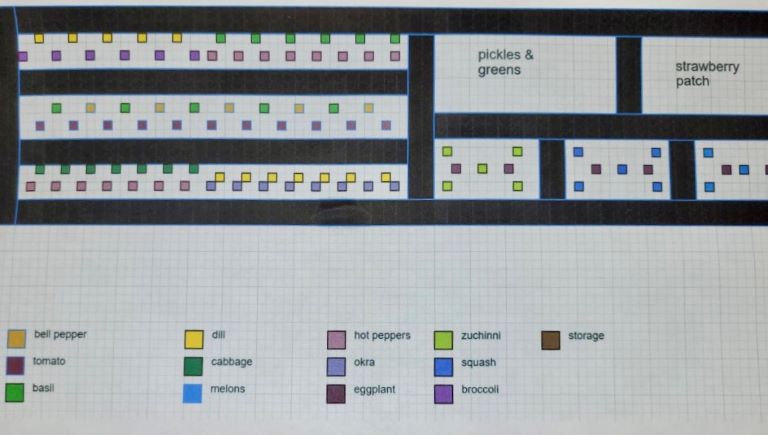
With our new look we are also trying new plant varieties.
New Plant Varieties
With last year not being so good, we tried some new plant varieties, especially our tomatoes. Last year we got some, but most got a disease and died. So with new seeds in hand that my son-in-law, Chris researched and bought, I started them in my nursery (at home under a grow light and little plastic greenhouse 3ft x 3ft).
As far as tomato varieties, because it gets very hot and we want to can more this year, plus make things like salsa, this years tomato line-up goes like this:
- Hillbilly is an heirloom tomato plant that originated from West Virginia in the 1800s. It is supposed to be low maintenance and drought resistant.
- Supersteak was in my seed tin and sounded like what my husband I would like for our BLT’s (bacon lettuce and tomato) sandwiches. BLT’s are our summer dinner favorite. If you haven’t tried them, make sure you put a good dollop of real mayonnaise on each toasted bread slices. All I can say is yummy!
- Opalka is another heirloom that first originated in Poland in the early 1900s. Chris got these because the tomatoes are sweet, thin skinned, meaty and have very few seeds. Good for canning, which he plans to use to make salsa and tomato sauce.
- Peron’s Resistant was introduced in 1951 from Argentina and is said to not need spraying for disease. Oops, as I gave it my natural spray of baking soda and Murphy’s oil soap. It is also said to be semi-determinate. Which means it is in the middle as far as determinate (grows only to a certain size and produces and dies) and indeterminate keep growing and producing.
- Sweeties we got from a library seed exchange and these are super sweet and low acid cherry tomatoes.
- Orange Hats are not in the pickle patch, but I had the seeds and wanted to try them. Why? Because these are perfect for a flower bed. That’s right, they only get to be 6-9 inches height and the cherry tomatoes will be orange. I think a perfect place in my front bed that will look like flowers and provide food for our salads.
All the rest of the garden is basically the same except we added tomatillos and luffas and decided against corn. We have never grown these and look forward to making salsa verde with the tomatillos. The luffas when young can be eaten like a zucchini, but if you let them grow and dry out, you can remove the dried insides for a sponge for dishes or bathing. I will, of course, let you know how it all turns out.
Besides new plant varieties, we are also changing how we take care of the garden with our new plant maintenance strategy.
New Plant Maintenance Strategy
Our main goal is to make gardening easier, take less time, and get more produce than last year. Last year, we did things wrong like overhead watering, which bred diseases like mildew and blight. So after last year, we assessed our gardening strategies and decided that this too needed changing.
I already talked about our new look and spacing so the plants have more air and space to grow. The spacing will also help prevent diseases.
After getting our spacing corrected, we looked at materials for mulching or keeping our plants moist as I only go to the garden every other day. We decided on straw, which might cause grasses to grow, but I have learned that it is not as bad as weeding last year. I just move the straw, pull the weeds, and then do a fertilizer treatment. As our soil improves with our compost and other materials, maybe this strategy will change.
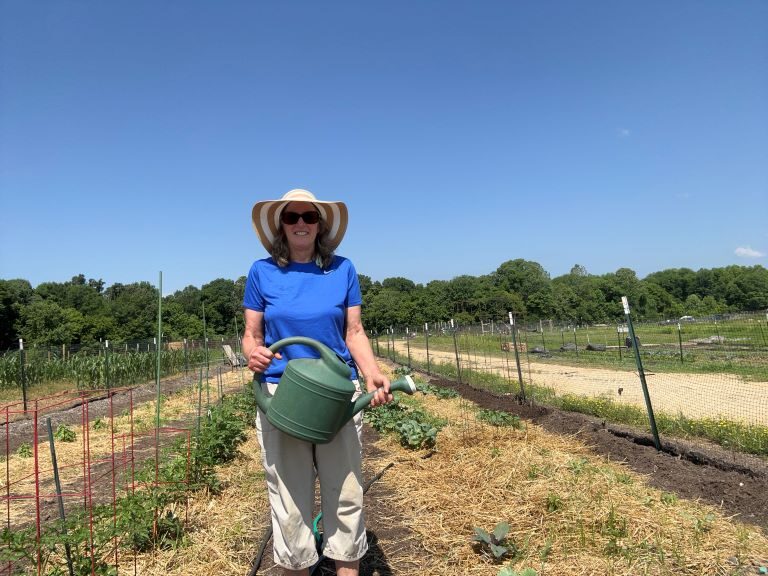
As for watering, we are not watering overhead, but using either the bucket method or just the hose to water the root areas. This should help prevent diseases like blight last year.
The last change was making sure I keep a careful watch for pests and diseases. It also helps that I printed off my county extension calendar of things to do every month in the garden. On the calendar for the end of May for my area, for example, it said to spray for pests and disease like mildew and gave several recipes for this.
I chose the baking soda and Murphy’s oil soap mixed in water method. The instructions said to do this every 7-10 days from this point on. So now, each time I spray, I enter it on my iPhone calendar and set up a reminder to do it again 10 days later. This strategy I also use for fertilizing.
Pickle Patch 2023
With all our new changes, we can already see a difference from last year. We picked our first bushel of kale and made our first batch of pesto. Another family favorite that we serve over spaghetti noodles.
I sure wish my mom and grandparents were still alive, as I know they would have some good gardening tips. I learned the love of gardening and preserving from them and by documenting this article on my page in my Ancestry® tree, it will be there for any future budding family gardener.
Again, Ancestry is not just about dates and documents. It is living history that gets preserved for future generations, and to me this is what ancestry truly is all about.
So when you have an interest or hobby, document it for the future.
Happy Gardening and Preserving!
